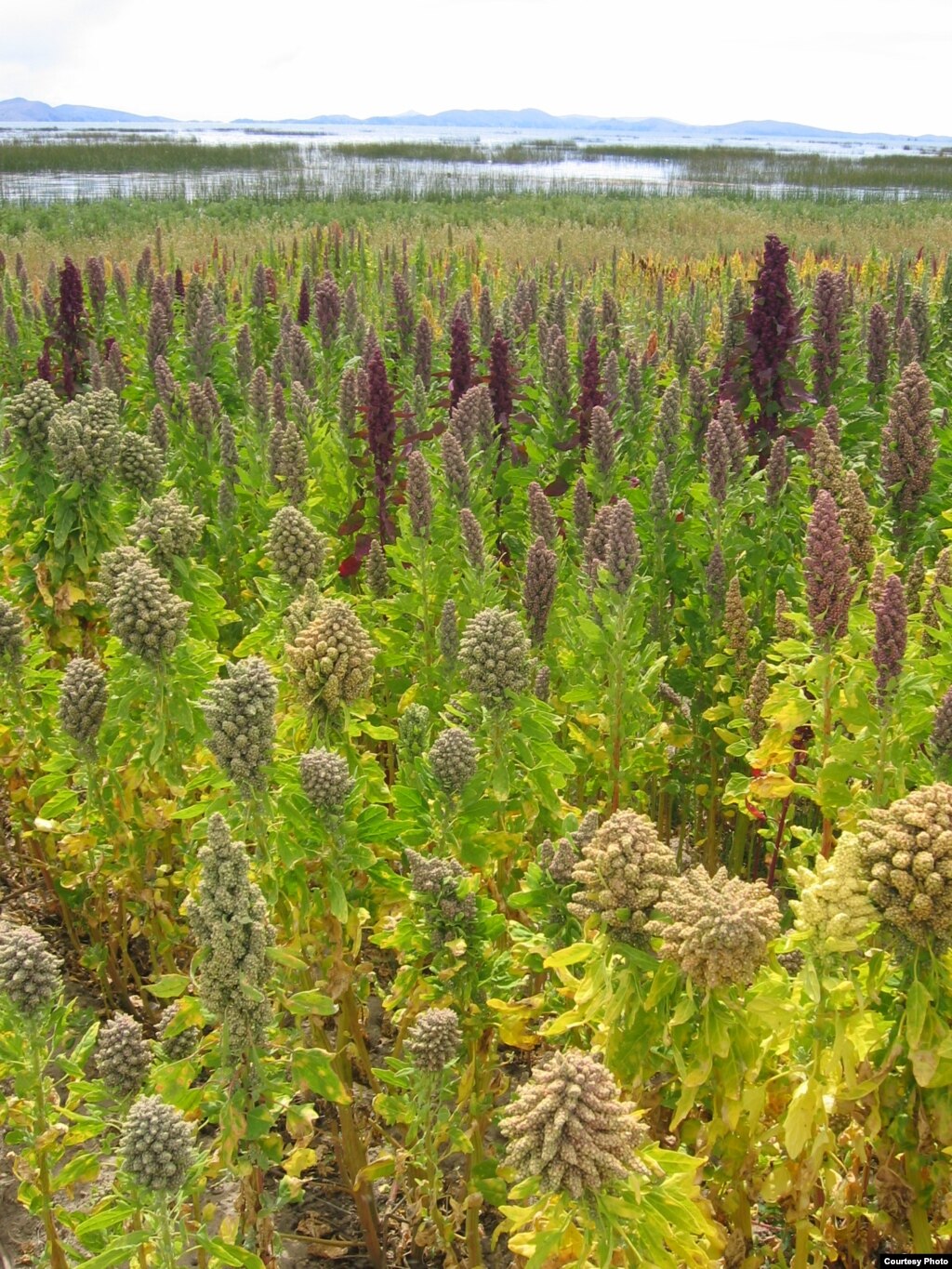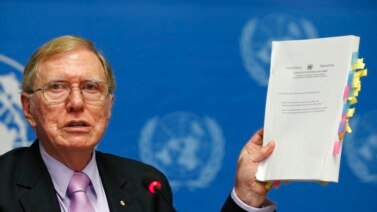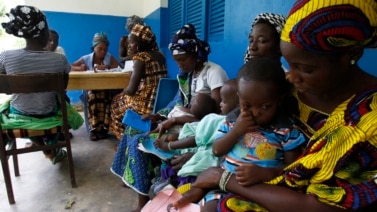
Hello and welcome to As It Is from VOA Learning English! I’m Anna Matteo in Washington.
On today’s As It Is, we will hear two agricultural stories that have something in common. The United Nations celebrates them both. The UN named 2013 the “International Year of the Quinoa.”
For 2014, they celebrate “The International Year of Family Farming.” Many call family farming the main form of farming worldwide. We will hear more about that later in the show.
But why celebrate quinoa? Why does a tiny, ancient grain deserve a UN celebration? Here’s agricultural reporter Christopher Cruise to explain.
Quinoa
When a grain becomes popular worldwide, there are two main effects. Farmers who grow the grain earn more in profits. And people who use it for food pay more.
Quinoa, a grain native to South America, has become popular in many areas in recent years. In fact, the United Nations’ General Assembly approved a declaration making 2013, “The International Year of the Quinoa.”
Quinoa is a traditional food crop in the Andes Mountains. The plant grows in an area near Lake Titicaca, along the border of Peru and Bolivia. Historical evidence shows that local people were growing quinoa as far back as five thousand to seven thousand years ago. During this period, they used both the seeds and leaves of this wild plant.
There are many kinds of quinoa. The plant can be grown in different climates. And it does not require a lot of water. Both the seeds and leaves can be used as food. The seed is the most commonly used part.
Quinoa can be ground into flour or cooked whole. It is used in cereals, drinks and fresh salads. It can also be mixed with vegetables or beans for a full meal. The leaves and stems can also be used for medicinal purposes. Some people use them to reduce pain, heal wounds and even keep insects away.
Quinoa is full of amino acids and minerals. Amino acids are organic compounds that form protein. The body needs them to help break down food, and to grow and repair tissue.
The UN Food and Agriculture Organization believes that quinoa can be used to fight hunger and feed a growing world population. The reason is the high value of protein provided by quinoa. The crop has also become popular among those seeking healthier ways to eat. The center of the seed contains up to 45 percent protein.
Quinoa is currently grown in more than 70 countries. Peru and Bolivia together produce 92 percent of the crop. The rest comes mainly from the United States, Ecuador, Canada and Argentina.
Starting about 10 years ago, the popularity of Quinoa caused its price to rise quickly. Many Bolivian farmers have gained from this increase by earning more. They have been able to buy vehicles and other goods with the increased profits.
However, other Bolivians have had to give up their main food because it costs too much. Instead they are buying and cooking with other foods that are not as rich in healthy minerals and proteins.
I’m Christopher Cruise.
And I’m Anna Matteo in Washington. You are listening to VOA Learning English.
Now we move on to another United Nations celebration. The UN has declared 2014 the “International Year of Family Farming.” Family farms are the main form of agriculture around the world. But keeping a farm operating is not easy.
Milagros Ardin reports.
UN Declares 2014 International Year of Family Farming
Family farming has been called the main form of agriculture around the world. The United Nations has declared 2014 the “International Year of Family Farming.”
The UN Food and Agriculture Organization says the year-long campaign is designed to increase public understanding of farms owned and operated by families. It says farm families are important producers of food for growing populations.
But many family farms do not provide the same worker benefits as large company farms. Many family farms cannot provide retirement plans, health care or child care. So, the FAO wants to get family farming included in national policies that support agriculture. The goal is to create a balanced and equal environment so family farmers can succeed.
Weather problems, price drops and weak world economies can hurt family farmers. For many, a single crop can mean failure or survival.
It is difficult for many family farmers around the world to gain the land, water and other resources needed to farm. The UN has helped establish more than 50 national committees to deal with these issues. The committees are made up of representatives of family farm communities.
Together, they decided on five goals to reach during 2014. One is to establish policies to make equal the rights of men and women farmers. They also want to guarantee that nations have the right to develop their own food production.
The committees hope to require governments to accept and follow certain environmental guidelines. And, they want governments of mainly agricultural populations to provide financial support to farmers. Finally, the committees agreed to work to support young people in agriculture.
I’m Milagros Ardin.
And I’m Anna Matteo. For more stories, go to our website at learningenglish.voanews.com, where you can also comment on our stories. And join us tomorrow for another As It Is on the Voice of America.





